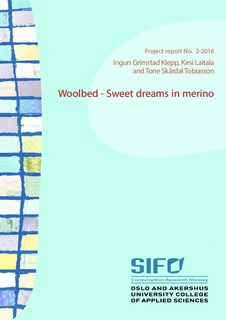Shared use and owning of clothes: borrow, steal or inherit
Ingun Grimstad Klepp and Kirsi Laitala
Abstract
This chapter takes a close look at the different forms of sharing based on empirical material on leisure clothing in Norwegian families. We ask what forms of sharing are practiced, which terms are used, and how consumers draw distinctions between them. We find that the forms are numerous and have an established place in Norwegian clothing culture. Sharing within the household, outside the pecuniary market, appears still to be the most important and also the most understudied form of sharing.
The literature about clothing consumption is increasingly about sharing, but limited to the new forms. However, sharing is a common form of human interaction, often misunderstood or overlooked. In order to understand the role of collaborative consumption in contemporary society, it is necessary to study both new and old forms of sharing. For a more systematic mapping of these forms a good place to start might be the study of relationships between access and ownership, and between different temporalities.
